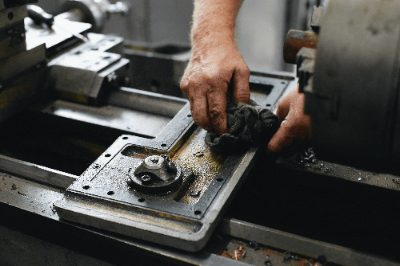What Is a Cloth?

Cloths are materials or towels used to wipe off dirt.
It is generally used for cleaning and maintenance, and is characterized by its excellent ability to absorb oil, water, and other contaminants. Most Cloths are made from used clothing and other unwanted fabric products.
In addition to used clothing, there are also rags made from paper and non-woven fabrics. There are various types of fabrics, and the appropriate one is selected and used depending on the intended use and purpose.
Uses of Cloths
Cloths are used for various purposes in cleaning and maintenance. The following are some examples of uses for Cloths:
1. Cleaning
It is used for household and commercial cleaning and janitorial work, as well as a rag for cleaning floors, furniture, and toilets.
It is also used for cleaning work in factories and manufacturing sites. Since machinery and equipment often use oil for lubrication, it is mainly used to wipe off oil stains. It is commonly used for cleaning machine parts and tools.
They are sometimes used in car washing and maintenance work on automobiles. Since soft cloths do not damage paint, they are used for wiping painted surfaces and cleaning engine compartments.
2. Beauty and Medical Care
In the beauty industry, it is used for nail art and hair coloring. It is also used to wipe off gel nail polish and as a protective sheet to prevent hair dye from sticking to the nail.
In the medical field, non-woven and microfiber Cloths are used to maintain a clean working environment during disinfection and surgery.
Principle of Cloth
The principle of how Cloth wipes away dirt is based on surface tension and adsorption. The surface of the Cloth fiber has microscopic gaps, which trap dirt particles and create an adsorptive force. In addition, the fibers in the Cloth easily stick to the surface and effectively wipe away dirt.
In addition, moisture also enhances the adsorptive power of dirt. When moisture comes into contact with stains, surface tension is activated, making it easier for the stains to adhere to the fibers of the Cloth. For this reason, when using them, they are often moistened with water.
As described above, Cloth wipes away dirt by means of microscopic gaps, surface tension, and adsorption. However, the effectiveness depends on the type of stain and the material of the Cloth used. Therefore, it is important to select the appropriate type and use it correctly.
Types of Cloths
Cloths are available in a variety of materials. The following are examples of the different types of Cloths:
1. Made of Merino Fabric
Cloth made from recycled merino fabrics, such as T-shirts and underwear. Since merino fabrics are made of cotton or polyester, they are suitable for rags that often come in contact with the skin.
It is characterized by its fine looped weave, which easily absorbs moisture. Therefore, Cloth can efficiently absorb moisture when wiping or washing a car. This soft fabric is also suitable for wiping prints, as its surface is scratch-resistant.
2. Made of Paper
The raw material is pulp made mainly from wood fiber. Cloths made of paper are disposable and do not require washing or cleaning after use. They are easy to use.
Compared to cloth Cloth, paper rags have less fluffing and dusting, and are superior in terms of hygiene and safety. The fine fibers make it easy to wipe off large amounts of oil stains.
The inexpensive materials and disposable nature of the cloths offer the advantage of reduced costs. In addition, it does not require time and effort for washing and drying, which leads to more efficient operations.
3. Non-woven Fabric
Nonwoven fabrics are made from synthetic fibers. They are made by methods other than weaving and knitting, such as chemical bonding. Cloths made of non-woven fabrics have excellent water and oil absorbency due to the structure of intertwined fibers.
The woven structure of the thread-like intertwined fibers is characterized by its resistance to fibers and dust. For this reason, it is often used in clean environments such as clean rooms and food factories. It is also highly durable and can be used multiple times.